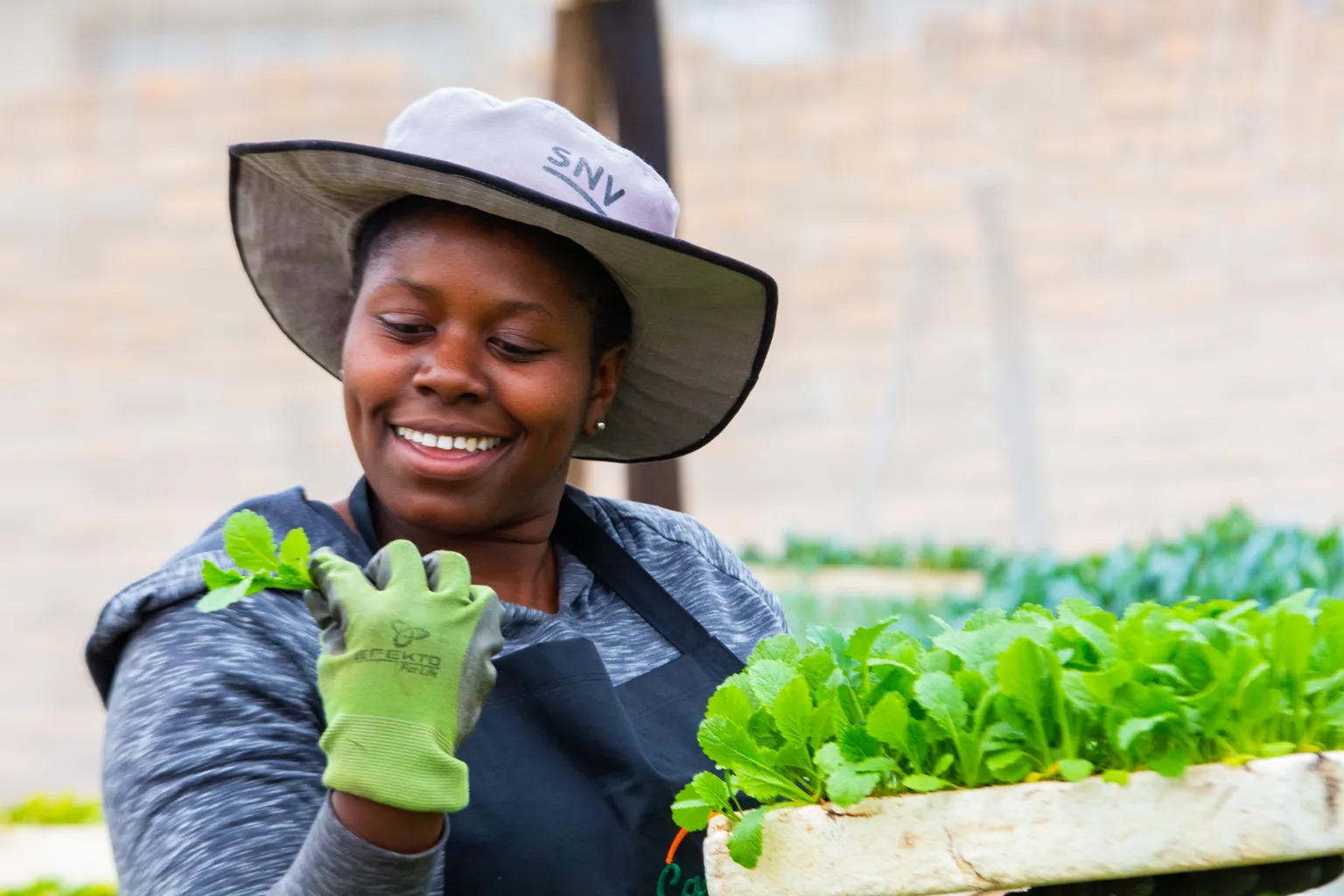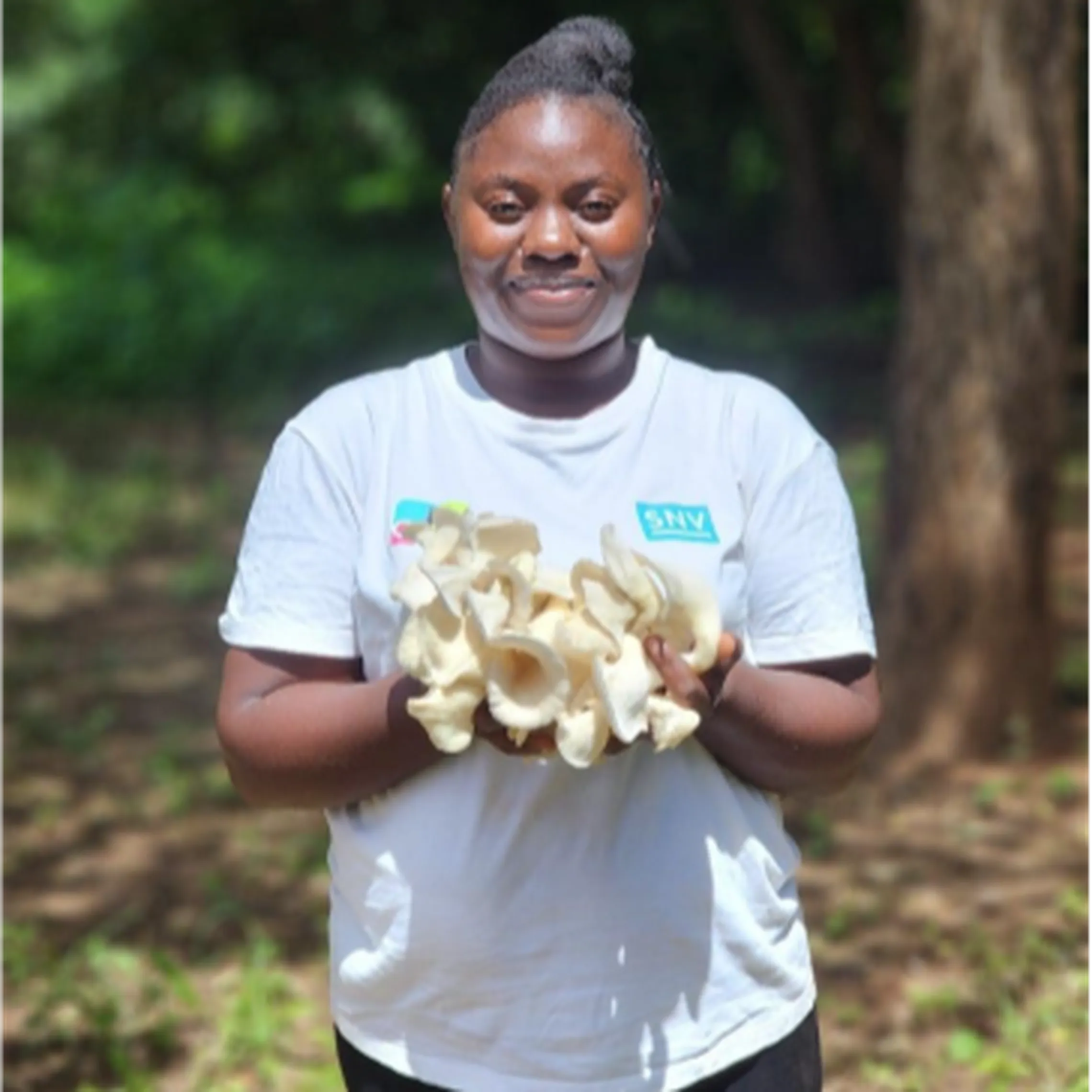Perspective: Bridging generations in Africa’s agricultural trade: A missed chance or a shared future?

By Mutinta Handondo, Lead, Tyrwell Youth Cooperative and Laida K. Chongo- GESI and Communications Advisor, SNV
Every year, on International Youth Day and more broadly, a lot is written about ‘the youth’. In Africa, for instance, by 2050, the continent will be home to 850 million young people, yet they are three times more likely to be unemployed than adults. They face immense barriers hindering their access to decent livelihood opportunities, including access to finance and markets for their enterprises, market-relevant skills and limited enabling environments for employment.
However, if anything is to change, it is always worth remembering that young people do not constitute a monolith, and there is a need to think about the youth in more nuanced, subjective ways if the promise of inclusion or systemic transitions are to be realised.
This year’s International Youth Day theme—Youth Localising SDGs—offers a useful lens for thinking about these issues. Localising means looking beyond global statements and focusing on the specific, structural barriers in each market. It means designing interventions that are rooted in the realities of young producers, traders, and processors. And it means measuring success not in terms of participation rates in training programmes, but in the volume and value of actual trade conducted by youth-led enterprises.
Driving agricultural trade in Zambia and Zimbabwe
One way to do this is to zoom in on context. What changes, for instance, if we take a more granular look at these issues not from a cross-continent, but a more localised national perspective?
Take Zambia and Zimbabwe, where agriculture and agri-food trade could be a significant source of youth employment and entrepreneurship. Local and cross-border markets hold significant opportunities, but the systems needed to connect young producers to those markets are underdeveloped. Tariff and non-tariff barriers, limited access to finance, lack of start-up tax incentives for enterprises for youth-led enterprises, and limited value addition hinder many from turning agriculture into a viable livelihood. Without change, these conditions will keep young people locked out of the economic gains food systems can deliver.
Contextualising the opportunity alongside the problem enables a more tailored approach to designing a pathway for change. From our experience, a four-pronged approach has been critical to drive markets for trade for youth agri-preneurs. This four pronged- approach encompasses: Access- Match- Growth- Enable. It entails understanding the local and international market demand for youth agri-preneurs products. We then move to working with and for youth agri-preneurs to equip them with the access to skills, resources, digital tools, finance and market linkages for their products. Further, we engage with ecosystem actors particularly governments and the private sector through policy dialogue to enhance the enabling environment for markets for trade for youth agri-preneurs.

Mutinta Handondo is a young agri-preneur and the Lead of Tyrwell Youth Cooperative. She works with fellow young farmers on poultry, mushroom farming, organic fertiliser production, and sunflower cultivation. She also helps them find and grow markets to sell their agri-food products.
Market systems development approach
In Zambia and Zimbabwe, our market systems development approach emphasizes strong relationships between value chain actors who include youth agri-preneurs, private sector, processors and consumers. The bargaining power of youth agri-preneurs is enhanced by aggregating production volumes and promoting co-operatives. Storage infrastructure and warrantee systems are developed to enable young people to access better pricing for their agri-food products by selling at optimal times in line with the market demand. Young agri-preneurs participation in sub-regional trade fairs is encouraged, as it opens market outlets and increases their income.
Policy is the fourth pillar. Trade must be made easier, not harder. The African Continental Free Trade Area (AfCFTA) was designed to unlock intra-African commerce, yet its progress has been slow. Policy bottlenecks, inadequate enforcement, and infrastructure deficits have left many youth-led businesses unable to compete beyond their immediate localities. For young agri-preneurs, every delay in implementation is another missed season, another market out of reach.
Youth shaping Africa's agricultural trade
The challenge is not only about improving access to markets, but also about enabling young people to shape those markets. When youth are treated as passive beneficiaries rather than active market participants, their enterprises are often left vulnerable to short-term shifts in demand or policy. Building resilient youth-led businesses requires recognising them as co-creators in the value chain, capable of influencing standards, negotiating contracts, and driving innovation.
Ultimately, any pathway, granular or otherwise, will depend on first-hand experiences in how they are applied. This means centring the experiences and perspectives of young people themselves.
There are promising examples. In Zambia, the Youth Employment and Entrepreneurship- Amplifying Enterprises and Trade (YEE-AET) project is putting this approach into practice. Mutinta Hadondo, a 28-year-old agri-preneur has grown her poultry and mushroom farming business with remarkable results. As lead of the Trywell Youth Group, she and her team have used digital tools, coaching, mentorship and market linkages to reach more customers — growing from just $122 in sales to $582. To overcome market barriers, the group conducted market research to understand their customer needs, leveraged e-commerce and social media platforms to expand their customer base, and participated in trade shows to grow their markets.
To scale such efforts, Africa must connect its youth to functioning, fair, and open markets. Failure to do so would mean forfeiting one of its greatest economic assets, with social and economic consequences lasting for decades. Success, however, could transform agriculture into a driver of growth, trade, and resilience. The path forward is imperative: reform policies to reduce barriers, invest in systems that sustain trade, and ensure youth are not just present in markets, but influential within them.
The real question is whether the political and institutional will exists to dismantle the barriers in their way?
Explore our youth initiatives
Read more about our work in Zambia and Zimbabwe, and see how together we can remove barriers, grow opportunities, and empower young agri-preneurs to shape the future of agricultural trade.